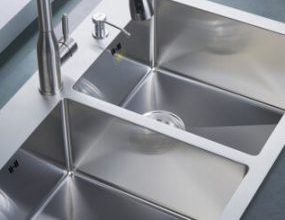The check engine light can be a source of confusion and worry for many car owners. It’s a small light on your dashboard that illuminates when there’s an issue with your vehicle’s engine or emission control system. While it’s essential not to ignore this warning, it’s equally important to understand what it means and how to respond. In this article, we’ll demystify car diagnostics and help you understand the check engine light.
What Does the Check Engine Light Indicate?
When the check engine light comes on, it’s an indication that the vehicle’s onboard diagnostics system, known as OBD-II (On-Board Diagnostics II), has detected a potential problem. The OBD-II system monitors various sensors, systems, and components of your car, including the engine, emission controls, and fuel system.
It’s crucial to note that the check engine light doesn’t provide specific details about the problem. Instead, it serves as a general warning that something requires attention. To determine the exact issue, you’ll need to connect your vehicle to a diagnostic tool that can read the trouble codes stored in the OBD-II system.
Interpreting Check Engine Light Codes
When you visit a reputable Northern Beaches mechanic like Peninsula Auto Clinic in Mona Vale, they can use a diagnostic tool to retrieve the trouble codes from your vehicle’s OBD-II system. These codes provide valuable information about the potential problem.
Each code consists of a series of alphanumeric characters and corresponds to a specific issue. For example, a code like P0420 might indicate a problem with the catalytic converter, while a code like P0302 might point to a misfire in cylinder 2. These codes serve as a starting point for identifying the underlying issue.
Common Reasons for Check Engine Light Activation
There are numerous reasons why the check engine light might come on. Some common causes include:
- Faulty Oxygen Sensor: The oxygen sensor measures the amount of oxygen in the exhaust gases, helping to adjust the air-fuel mixture. A faulty sensor can lead to decreased fuel efficiency and increased emissions.
- Loose or Faulty Gas Cap: A loose or faulty gas cap can cause fuel vapor leaks, triggering the check engine light. Ensuring a tight seal on your gas cap can sometimes resolve the issue.
- Catalytic Converter Issues: The catalytic converter reduces harmful emissions. Problems with the catalytic converter, such as a failed sensor or a clogged converter, can trigger the check engine light.
- Mass Airflow Sensor Problems: The mass airflow sensor measures the amount of air entering the engine. A malfunctioning sensor can affect fuel delivery and engine performance.
- Ignition System Issues: Problems with the ignition system, such as faulty spark plugs or ignition coils, can lead to engine misfires and trigger the check engine light.
- Emission Control System Faults: Various components of the emission control system, such as the EGR valve or EVAP system, can develop faults and cause the check engine light to illuminate.
These are just a few examples, and there are numerous other potential reasons for the check engine light to come on. It’s essential to consult with a qualified mechanic to diagnose the specific issue accurately.
Responding to the Check Engine Light
When the check engine light comes on, it’s essential not to panic. However, it’s equally important not to ignore it. Here’s what you should do:
- Check for Obvious Issues: Before heading to a mechanic, check for any obvious problems such as a loose gas cap. If it’s loose, tighten it and see if the light turns off after a few drive cycles.
- Retrieve Trouble Codes: Visit a reputable Mona Vale mechanic like Peninsula Auto Clinic to retrieve the trouble codes from your vehicle’s OBD-II system. They have the expertise and diagnostic tools to accurately interpret the codes and determine the underlying issue.
- Address the Issue Promptly: Once the problem has been identified, it’s important to address it promptly. Ignoring the issue could lead to further damage or even safety hazards. A qualified mechanic can advise you on the necessary repairs or maintenance needed to resolve the problem.
Resources for Further Reading
For additional information about car diagnostics and the check engine light, consider exploring the following reputable sources:
- CarMD.com – CarMD provides insights into common check engine light problems, maintenance tips, and helpful resources for car owners.
- Popular Mechanics – Popular Mechanics offers a wide range of articles and guides on car maintenance, diagnostics, and troubleshooting.
- Carsales.com.au – Car Sales is a trusted resource for car sales, reviews, maintenance advice, and automotive news.
By consulting these sources, you can expand your knowledge of car diagnostics and become better equipped to understand and respond to the check engine light.
In conclusion, the check engine light serves as a valuable indicator of potential issues with your vehicle. By understanding its purpose and promptly seeking professional help, such as visiting a reputable mechanic like Peninsula Auto Clinic in Mona Vale, NSW, you can ensure your car receives the necessary attention and keep it running smoothly on the road.




